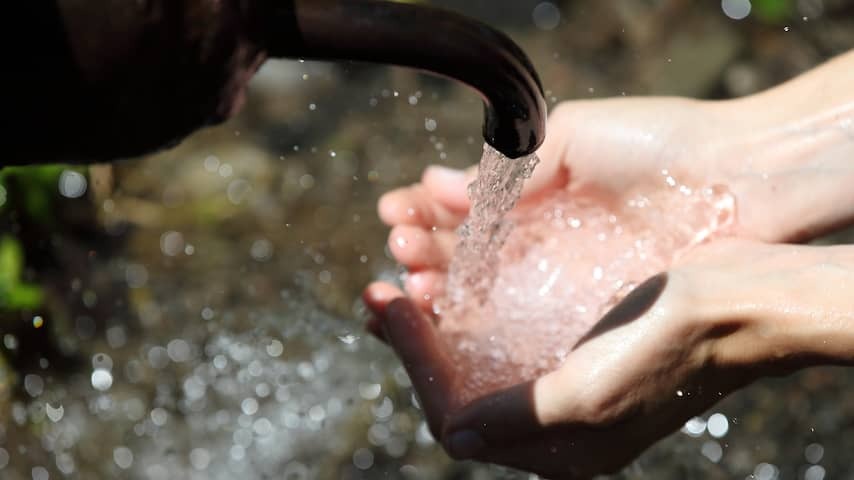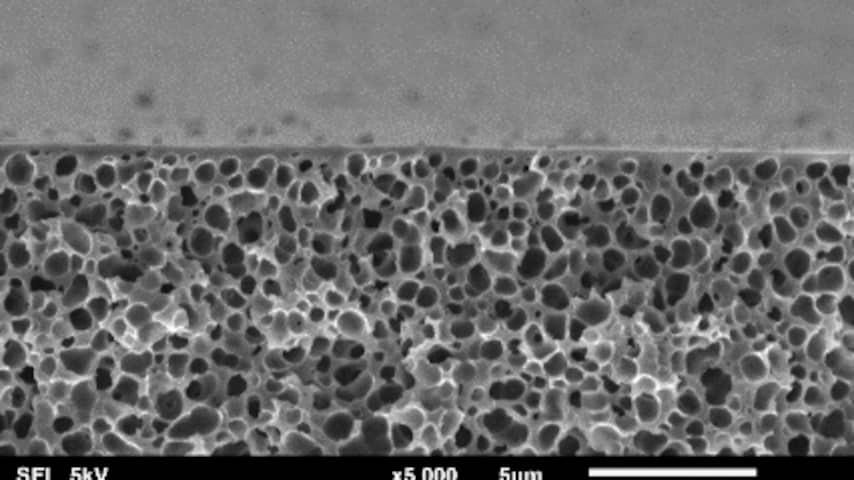
In the Netherlands we increasingly suffer from dry periods, which means that future water supply is under pressure. Could we solve that with sea water? Nu.nl asks experts.
With enormous drought, such as during last week’s heat wave, there is a lot of demand for water. Michelle van Vliet, professor of water quality and sustainable water systems at Utrecht University, sees that it is becoming more challenging to answer that growing water demand well.
Due to the dry summers and the growing population, it becomes more difficult to find the balance between supply and demand in water supply. “During the recent drought we have seen that water quality also deteriorates. That deterioration can therefore also have consequences for drinking water production, agriculture and nature,” says Van Vliet.
On an average day, people at home use around 129 liters of water per person per day. We remove part of that water from the IJsselmeer and Markermeer, but soon filtered seawater flows through the tap. Companies such as Dunea and Brabant Water investigate whether we can convert salt water to fresh water with a special technique.
We do this in the Netherlands with a membrane. “It’s a kind of sieve,” says Wiebe De Vos, professor of Membrane Technology at the University of Twente. The holes in the membrane are so incredibly small that almost nothing can go through except water, as can be seen on the photo below. The salt then remains behind.
Salt is often left in nature
Destroying water costs a lot of energy and not every technique is equally sustainable, because they emit CO2 in the conversion. The energy for membrane technology must therefore be extracted from sustainable energy sources. “Reducing water shortage should not increase the climate problem due to increased CO2 emissions,” says Van Vliet. “An energy supply from sustainable sources cannot be missed.”
A Schevenings company already uses desired technology with solar energy in a sustainable way. According to De Vos we have to go there. “A ride of 12.5 kilometers with an electric car equals the energy to make 1,000 liters of clean drinking water,” says the professor.
All the remaining salt that the membrane removes from the water must also go somewhere. According to Van Vliet, depending on the technology, about 1.5 liters of salt remains for each liter of fresh water. The salt is then usually left in nature, which is not good for the ecosystem.
“You can see that in the waters around the rich countries where this technology is already being used, such as Saudi Arabia,” says De Vos. “Our North Sea will not get salty quickly, but the water life can certainly be disturbed.”
A combination of solutions
Although we could use the North Sea as a drinking water source for the whole of the Netherlands, both professors are not very enthusiastic. “The question is whether it would not be better and cheaper to first focus on saving, reuse and keeping water better. We can also make drinking water from unconventional sources such as brackish groundwater and waste water,” says De Vos.
Van Vliet also prefers that we use a combination of solutions for a water shortage. “For example, by better retaining the (rain) water, instead of removing as quickly as possible. Or by dealing more efficiently with water.” In addition, Van Vliet emphasizes that work must also be done on water quality.
For example, Noord-Brabant works together with various organizations to better hold the water there. In the province, it was years of policy to run away as much water as possible. The new plan must prevent that. Those kinds of steps will first have to be taken before we empty the North Sea.
In The Netherlands, we are increasingly suffering from dry periods, which Puts Puts Pressure on the Future Water Supply. Could we solve that with seawater? NU.nl Asks the experts.
With enormous drough, such as killing the heat wave of last week, there is a great demand for water. Michelle van Vliet, Professor of Water Quality and Sustainable Water Systems at Utrecht University, Sees That It Is Becoming More Challenging To Properly Answer That Growing Water Demand.
Due to the dry summers and the growing population, it is Becoming More Difficult to Find the Balance Between Supply and Demand in Water Supply. “Duration the recently Drought, we have seen that the water quality also Deterniorates. That Deterioration can also have consequences for Drinking Water Production, Agriculture and Nature,” Says van Vliet.
On an Average Day, People at Home use Approximately 129 Liters or Water per person per day. We get part of that water from the IJsselmeer and Markermeer, But Soon Filtered Seawater May Flow Through The Tap. Companies Such as Dunea and Brabant Water are Investigating WHETER WE CAN convert Salt Water to Fresh Water with a Special Technique.
We do that in the Netherlands with a membrane. “It is a kind of sieve,” Says Wiebe de Vos, Professor of Membrane Technology at the University of Twente. The holes in the Membrane Are So Incredible Small That Almost Nothing Can Pass Through Except Water, as Can Be Seen In The Photo Below. The Salt then Stays Behind.

Salt is of left Behind in Nature
Disalting Water Costs a Lot of Energy and Not Every Technique is Equally Sustainable, Because they Emit Co2 Duration Conversion. The Energy for the Membrane Technique Must Therefore be obtained from Sustainable Energy Sources. “Reducing water shortage should not increase the climate problem due to increased CO2 emissions,” Says van Vliet. “An Energy Supply From Sustainable Sources is Essential.”
A Scheveningen Company is Already Using the Onsalination Technique in a Sustainable Way With Solar Energy. Accordance to the fox, we have to go there. “A 12.5 kilometers Ride With An Electric Car is Equal to the Energy to Make 1,000 Liters of Clean Drinking Water,” Says the Professor.
All the remoining salt that the membrane extracts from the water must also go somewhere. Accordance to van Vliet, Depding on the Technique, Approximately 1.5 Liters or Salt Remains for Every Liter or Fresh Water. The Salt is then usual Left Behind in Nature, which is not good for the ecosystem.
“You already see that in the Waters Around the Rich Countries Where This Technology Is Already Being Used, Such As Saudi Arabia,” Says de Vos. “Our North Sea Will Not Become More Salty Quickly, But Marine Life Can Certainly Be Disrupted.”
A Combination of Solutions
Althegh we could use the North Sea as a Drinking Water Source for the Whole of the Netherlands, Both Professors are not very Enthusiastic. “The Question is Whether it would not be better and cheaper to first focus on saving, reuse and better retaining water. We can also make drinking water from unconventional sources such brackish groundwater and waste water,” Says de Vos.
Van Vliet also prefers that we use a Combination of Solutions for a Water Shortage. “For example, by retaining the (Rain) Water Better, Instead of Draining It As Quickly As Possible. Or by use Water More Savaringly.” In Addition, Van Vliet Emphasizes That Work Must also Be Done on Water Quality.
For Example, Noord-Brabant is Working with Various Organizations to Retain the Water There Better. In The Province, IT was Policy for Years to Let as Much Water Run Away as Possible. The New Plan Should Counter That. Those child of steps will have to be tasks before we empty the north sea.